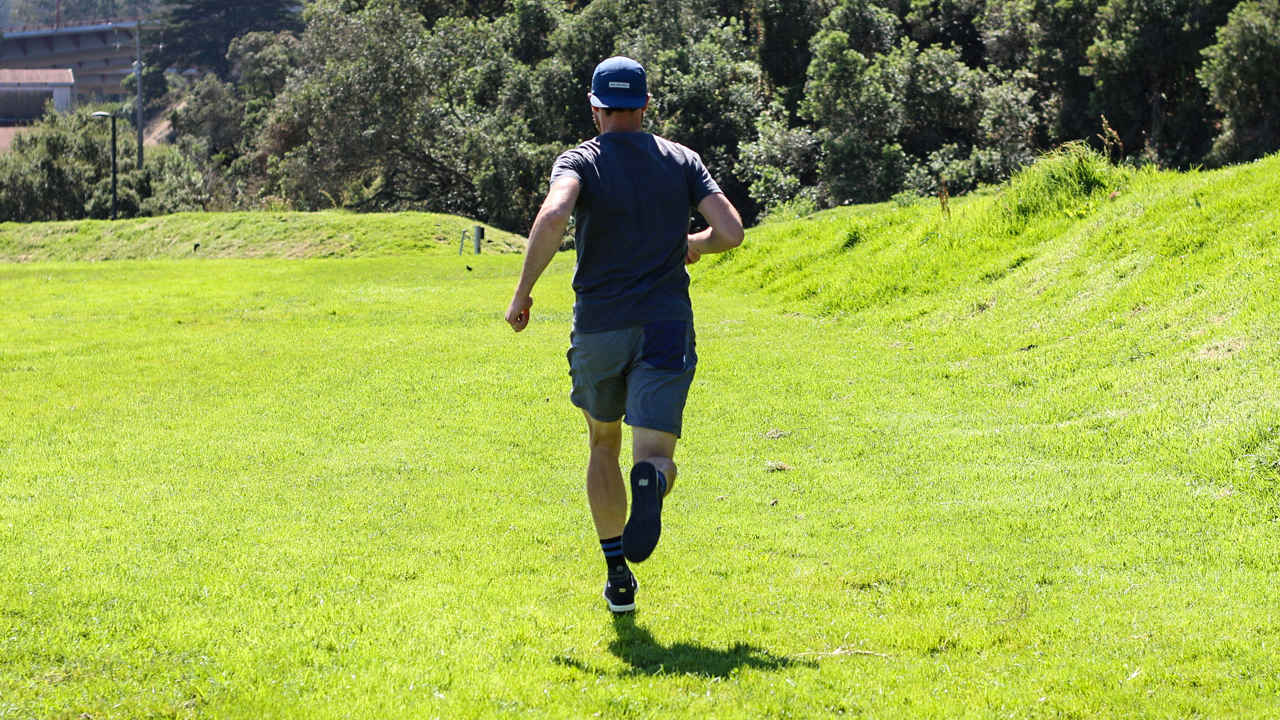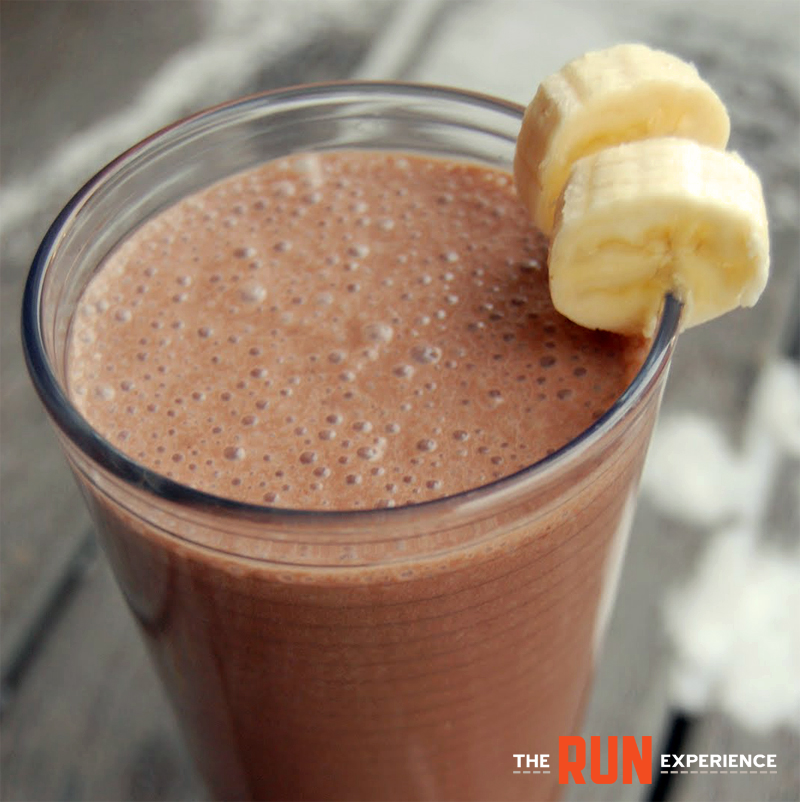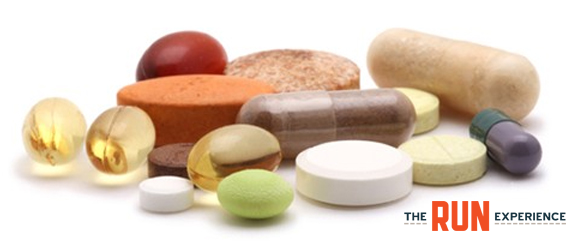Running with DOMS: How to Fix and Conquer Muscle Soreness
DOMS stands for delayed onset muscle soreness, a condition that causes muscle aches and soreness. Learn how to get rid of DOMS for good.

Are you a runner dealing with that all-too-familiar post-run pain? You're not alone — Delayed Onset Muscle Soreness (DOMS) is a common nemesis for runners of all levels. But here's the good news: we're about to dive into everything you need to know about DOMS, from what causes it to how long it lasts, and most importantly, how to fix it.
Whether you're a seasoned marathoner or just lacing up for your first 5K, this guide will help you understand, manage, and even prevent DOMS. So let's hit the ground running and learn how to keep those sore muscles at bay!
So, what is DOMS? Good question. Let’s break it down.
What Is DOMS?
Ever finished a tough run feeling like a champion, only to wake up the next day feeling like you've been hit by a truck? Welcome to the world of DOMS — Delayed Onset Muscle Soreness. It's the unwelcome guest that shows up to the post-run party, usually about 24-48 hours after you've pushed your limits.
But what's really going on when DOMS crashes your recovery?
DOMS Decoded
DOMS is your body's way of saying, "Whoa there, runner! You really pushed it this time!" It's characterized by:
- Muscle soreness and stiffness: Your quads feel like they've turned to stone? Classic DOMS.
- Reduced range of motion: Suddenly, tying your shoelaces feels like an Olympic event.
- Swelling in the affected muscles: A little puffiness is normal, but excessive swelling might be a red flag.
- Temporary reduction in muscle strength: Your usual pace feels like you're running through quicksand.
The Science Behind the Soreness
While researchers are still debating the exact mechanisms (biology loves to keep us guessing), here's what we think is happening:
- Micro-tears in muscle fibers: Those hill repeats? They're causing tiny tears in your muscle fibers.
- Inflammation: Your body sends in the cavalry (inflammatory responses) to repair the damage.
- Fluid accumulation: This contributes to that stiff, swollen feeling.
When DOMS Loves to Strike
DOMS is an equal-opportunity annoyance, but it's especially fond of showing up after:
- Downhill running: Hello, quadriceps! The eccentric muscle contractions involved in downhill running are a recipe for DOMS.
- Increasing mileage or intensity: Suddenly upped your long run from 10 to 15 miles? DOMS might come knocking.
- Trying new exercises: Added strength training to your routine? Your muscles might protest at first.
Remember — while DOMS can be uncomfortable, it's generally a sign that your body is adapting and getting stronger.
How Long Does Running DOMS Last?
Ah, the million-dollar question every sore runner wants answered: "How long am I going to feel like I've been trampled by a herd of elephants?" Let's break down the DOMS timeline — from your first "ouch" to your triumphant return to the roads.
The DOMS Clock: A Day-by-Day Breakdown
- Day 0 (Race day or tough workout): You're feeling pumped! Those endorphins are masking any immediate discomfort.
- Day 1 (24 hours post-run): Hello, DOMS! You might start feeling a bit stiff and sore. This is just the opening act.
- Days 2-3 (48-72 hours post-run): Welcome to peak DOMS. This is usually when the soreness hits its crescendo. Stairs become your nemesis, and sitting down... well, let's just say it's a commitment.
- Days 4-5: You're on the upswing! Soreness starts to fade, and you're remembering why you love running (it's not for the DOMS, that's for sure).
- Days 5-7: For most runners, DOMS is in the rearview mirror by now. You're back to your normal routine, possibly even feeling stronger.
Factors That Can Affect Your DOMS Duration
- Intensity of your run: That all-out sprint finish? Yeah, you might be feeling that for a while.
- Your fitness level: Newbie runners or those returning from a break might experience longer-lasting DOMS.
- Hydration and nutrition: Properly fueling before, during, and after your run can impact recovery time.
- Sleep and stress levels: Your body does its best repair work when you're catching those Zs.
- Genetics: Some lucky runners just seem to bounce back faster. If that's you, we're all a bit jealous.
When to Wave the White Flag
While DOMS is a normal part of the running life, there are times when you might need to call in the pros:
- If your soreness doesn't start to improve after 7 days
- If you notice excessive swelling or redness
- If you're experiencing sharp, persistent pain (rather than the dull ache of typical DOMS)
Remember, every runner's DOMS experience is unique — like a slightly uncomfortable fingerprint. By listening to your body and following smart recovery practices, you'll be back to pounding the pavement in no time.
How to Get Rid of DOMS
In theory, DOMS is minor muscular damage, so RICE (Rest, Ice, Compression, Elevation) should apply here to speed up blood flow and help you recover post-exercise.
Rest: It will go away in a couple of days. However, you can still exercise and the pain will disappear temporarily but come back shortly after.
Ice: The idea is to reduce inflammation and it has definitely mixed results in the literature. It could also blunt the training adaptation, more on this below. I don’t know about you, but ice is torture to me. However, putting an ice pack on sore muscles can reduce inflammation.
Compression and Elevation: From what I’ve seen it has some potential, and I’ve tried it myself. I love the 2XU pants and I’ll wear them at work sometimes under everything. It removes some of the pain and makes my legs feel lighter.
Nothing works for me better than a hot bath with magnesium salts. And from the literature, it looks like two days before an event would also benefit recovery. Last but not least: massage. Ouch! My husband always thinks that I’m having a leisurely relaxing one-hour massage.
Let me tell you the truth. It hurts like hell and is even more painful than the training. I usually do not like to get a massage when I have DOMS, same reason as ice bath, why create more pain? But after a couple of days, it is always a good idea to remove the remaining knots in your muscle to reduce soreness and improve your range of motion.
Quick Fixes for Dealing with Running DOMS
Feeling like the Tin Man after a rainy marathon? Don't worry — we've got your back (and your quads, and your calves...). Here's your go-to list of quick fixes to help you bounce back from DOMS faster than you can say "fartlek."
1. Keep on moving
- What to do: Light, easy movement — think gentle jog or brisk walk
- Why it works: Increases blood flow, reducing stiffness and promoting recovery
- Runner's tip: Try a 15-minute easy jog or a walk around the block — your muscles will thank you!
2. Roll it out
- What to do: Foam rolling or self-massage
- Why it works: Breaks up adhesions and increases circulation
- Runner's tip: Spend extra time on your quads, calves, and IT bands — the usual suspects in running DOMS
3. Ice, ice, baby
- What to do: Apply ice to sore areas for 15-20 minutes at a time
- Why it works: Reduces inflammation and numbs pain
- Runner's tip: A bag of frozen peas makes a great makeshift ice pack (and a post-recovery snack!)
4. Heat things up
- What to do: Take a warm bath or use a heating pad
- Why it works: Increases blood flow and relaxes tight muscles
- Runner's tip: Add Epsom salts to your bath for an extra recovery boost
5. Stretch it out (gently!)
- What to do: Light, dynamic stretching
- Why it works: Improves flexibility and reduces muscle tension
- Runner's tip: Focus on moves like leg swings, walking lunges, and gentle yoga poses
6. Fuel your recovery
- What to do: Eat protein-rich foods and stay hydrated
- Why it works: Provides nutrients for muscle repair and reduces inflammation
- Runner's tip: Try a smoothie with protein powder, banana, and tart cherry juice — a triple threat against DOMS!
7. Compress to impress
- What to do: Wear compression garments
- Why it works: Reduces swelling and supports sore muscles
- Runner's tip: Sleep in compression socks for overnight relief
8. Catch some Zs
- What to do: Prioritize sleep and rest
- Why it works: Allows your body time to repair and recover
- Runner's tip: Aim for 7-9 hours of quality sleep — your muscles do their best repair work while you snooze
Remember, these are quick fixes — not miracle cures. DOMS is a normal part of pushing your limits, so wear it as a badge of honor (while you're gently foam rolling, of course). If your DOMS is severe or lasting longer than a week, it might be time to consult a professional.
Does Nutrition Help With DOMS?

A lot can be done there too. The key answer: proteins and carbohydrates together.
That is how the Got Chocolate Milk campaign was born. BUT: it is a bit of a big FAT scam or I should say a big SUGAR scam since most of these studies supporting milk chocolate for recovery were founded by the milk industry…
TRY THIS INSTEAD:
The milk industry is not wrong per se, but try this option for better taste and significantly less sugar:
- 8 ounces milk or half a scoop of whey protein in 8 ounces of almond milk,
- 1 banana
- 1 TBSP cocoa powder (of good quality)!
Milk has the advantage of having electrolytes compared to the whey, plus none of the sugar and the same effect. Additionally, quercetin, found in chocolate powder, is a potent antioxidant and anti-inflammatory.
But beware, more on this below.
After a hard session, papers report that in general 0.8g/kg of carbs + 0.4g/kg of whey protein works magic or 2:1 ratio carbs to protein to replenish your glycogen stores and keep protein synthesis up and running. That is between 20 and 35g of protein depending on your weight.
Above that amount, there is probably no significant impact.
Ideally, you’ll want to have this in a meal with real food within 2 hours of your session, but if you can’t, try a protein bar as a snack. (ProBar, Quest as examples) but there are many on the market.
Protein and carbs together work synergistically, as both will increase insulin and promote cellular uptake of nutrients for repair. Instead of whey, you can use casein before bedtime as it will release more slowly overnight.
Can Supplements Get Rid of DOMS?

Antioxidants, of course! Vitamin C, E and NAC (N-acetyl-cysteine) are among the most popular anti-oxidants out there. They scavenge free radicals (ROS) and help you recover faster.
However, research is showing that free radicals are actually needed for signaling training adaptation. You could totally blunt that response by using too much of them and then you wouldn’t actually adapt.
Use if needed only when no training adaptation is required–perhaps during a taper, recovery or the week after a race.
Anti-inflammatory drugs are also very useful. Of course, there is the popular over the counter anti-inflammatory Ibuprofen, part of the NSAID (none-steroidal anti-inflammatory) category. If I can not sleep, I will go for it since sleep is one of the most proven ways to recover.
But, do not abuse them! NSAIDs have a negative effect on muscle growth and therefore could undermine all your efforts a little bit like too many anti-oxidants. Plus it can give you gastrointestinal issues and other nasty side effects.
A more natural compound would be curcumin or turmeric. It has a similar mechanism of action to NSAIDs but does not cause thinning of the stomach lining. A recent study has shown that ingesting 2.5g of curcumin twice a day a couple of days before and after the exercise bout could be beneficial. But could it impair training adaptation? I don’t think this has been studied yet but since it acts similarly as NSAID I would not be surprised if it did.
Finally, tart cherry juice has also been studied a lot and here is a good paper. Like many fruit and vegetables, tart cherries contain a lot of antioxidants and flavonoids which have anti-inflammatory properties. Using around a marathon would not be a bad idea but during training could potentially inhibit training adaptation.
We don’t know yet. Be careful with this one though. Tart cherry juice consumed in the quantities that are suggested contains a lot of xylitol, a sugar alcohol that can ferment and give you the runs so definitely test beforehand.
Use HMB to Help With DOMS

Have you heard of HMB? It is a derivative of leucine, one of the most potent amino acids in terms of muscle growth. It has been reported that HMB (Beta-Hydroxy-MethylButyrate free salt) can help alleviate symptoms of DOMS but results are still varied.
HMB is, however, safe and worth trying if you know that you will have multiple hard workouts during the week. It works at reducing protein degradation (i.e. muscle breakdown). A dose of 3 g before exercising would be recommended in that instance.
Then in the same line of thought, amino acids and BCAA, which stands for branched chained amino acid (leucine is one of them) have also shown to reduce DOMS in some instances. Doses vary from 5 to 12g, once or twice per day, 7-10 days before. But since most proteins (in particular whey and casein) contains those, you already have your bases covered.
And then you have Citrulline-malate which at 8g could alleviate DOMS and also L-carnitine, which has to be loaded with 3g/day for three weeks for an effect on reducing muscle pain and damage. The good thing about that one is that it also can increase fat metabolism and make you a better fat burner at the same time. Who does not like that?
Beware though, a lot of these studies use muscle damage as a marker which is most likely correlated with muscle soreness but not always and is individual. So see if it works for you.
No Pain, No Gain?
Unfortunately, it might just be true–being a runner requires handling a little pain! So while we can and should find ways to mitigate DOMS, the goal is never to get rid of DOMS altogether.
My advice? Build up slowly in your training, and show up every day, i.e. aim to be the most consistent runner on your block! Try some of the strategies listed here. Be aware that, like all experiments, some of them could (ahem) impair training adaptations, so time them carefully and not too close to any important races out there!

Looking for more in-depth posts on nutrition and quantified performance? Follow Isabelle Nadeau at Inprove.Me.
Conquer Your Running DOMS
Looking for practical & effective tips on how to prepare for your next marathon? Check out our exclusive two-month half marathon training program that has expert tips and advice to make you marathon ready! Plus, don’t forget to download our new mobile app full of tips, videos, training advice, and motivation to get you started.
And if you’re ready to get rid of DOMS for good, then follow the nutrition, supplementation, and exercise advice above!

